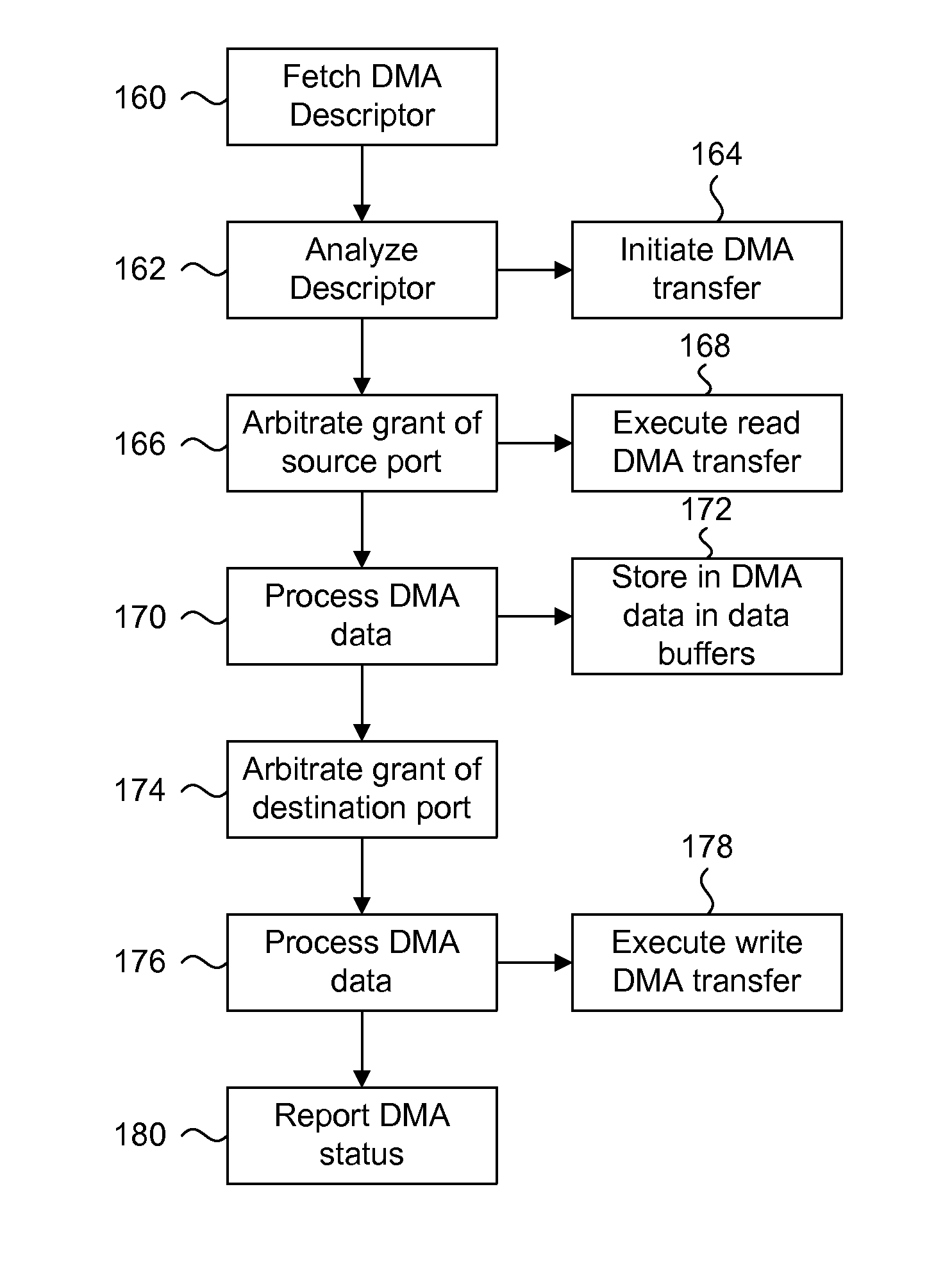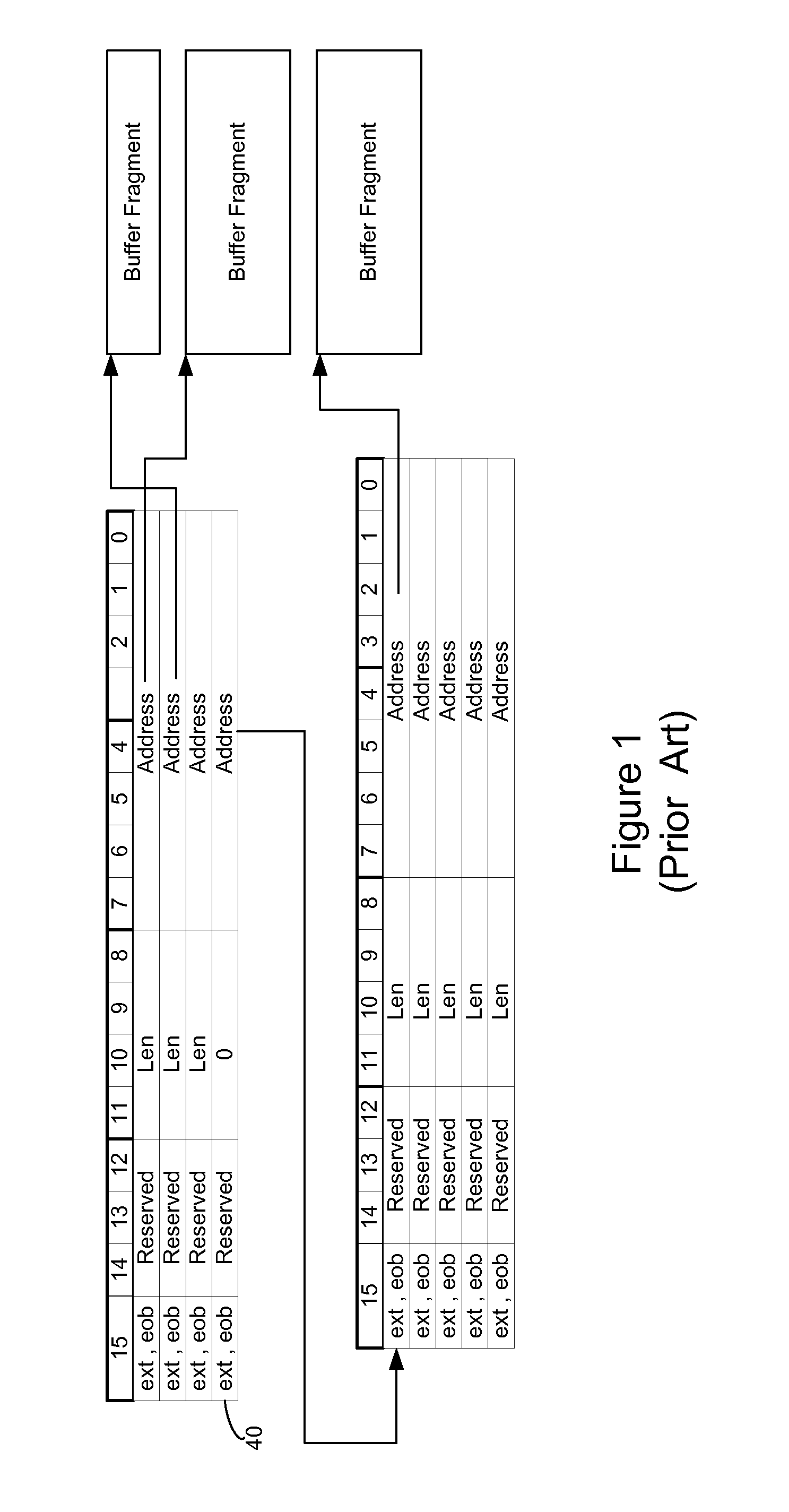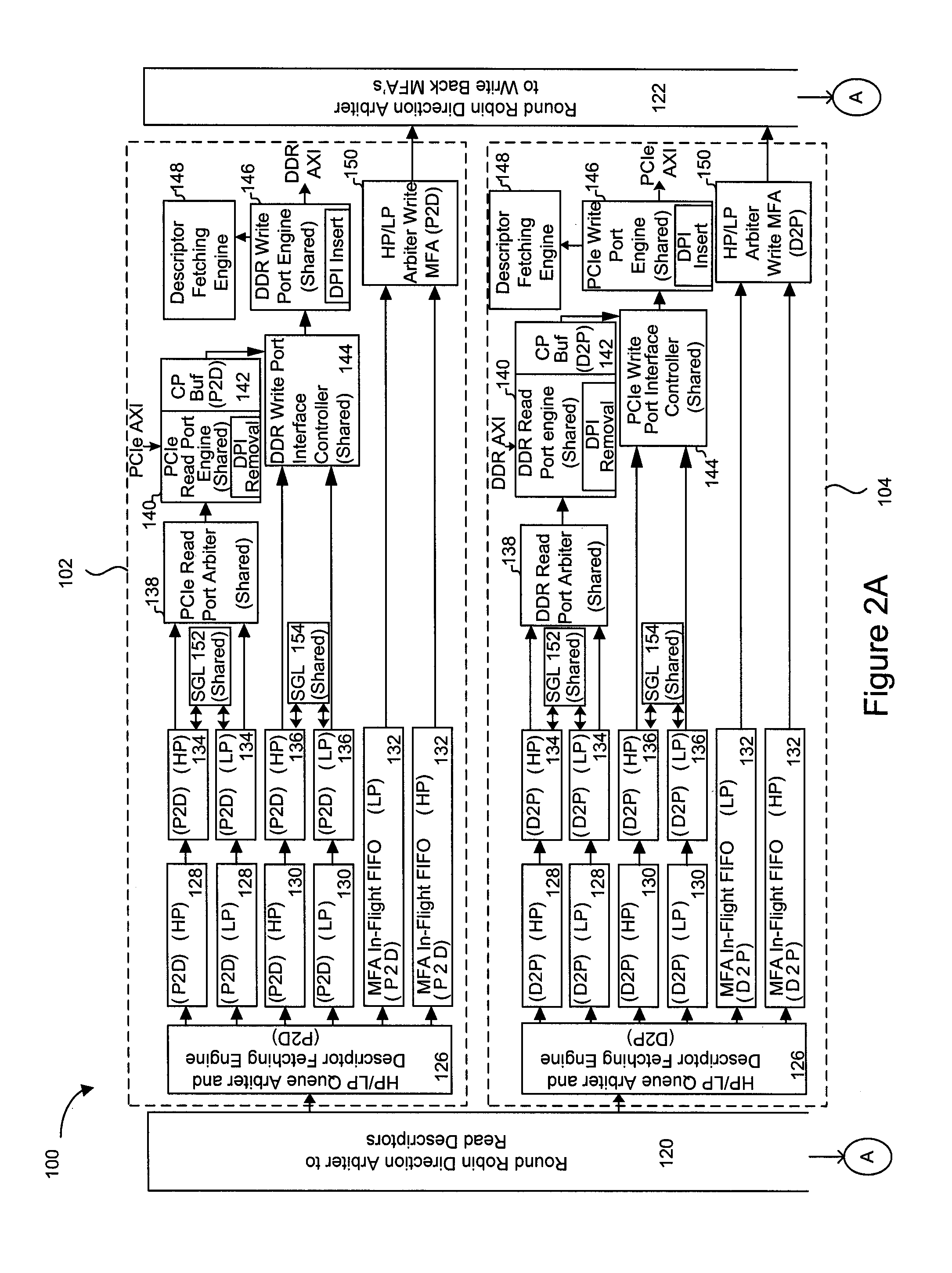Logical address direct memory access with multiple concurrent physical ports and internal switching
a direct memory access and physical port technology, applied in the field of memory communication in computers, can solve the problems of imposing significant challenges, affecting the dma master (requestor), and unable to freeze or stop all operations,
- Summary
- Abstract
- Description
- Claims
- Application Information
AI Technical Summary
Problems solved by technology
Method used
Image
Examples
Embodiment Construction
[0074]Generally, the present invention provides a DMA engine that is suitable for higher performance SOC devices that have multiple concurrent on-chip / off-chip memory spaces. The DMA engine operates either on a logical addressing method or physical addressing method and provides random and sequential mapping functionality from logical addresses to physical addresses, while supporting frequent context switching among a large number of logical address spaces. Embodiments of the present invention utilize per direction (source-destination) queuing and an internal switch to support non-blocking concurrent transfer of data in multiple directions. A caching technique can be incorporated to reduce the overhead of address translation. Embodiments of the present DMA architecture utilize a number of techniques to address the problems that exist in known DMA structures. The described system and methods are particularly useful in high performance applications, such as RAID On a Chip SOC applicat...
PUM
 Login to View More
Login to View More Abstract
Description
Claims
Application Information
 Login to View More
Login to View More - R&D
- Intellectual Property
- Life Sciences
- Materials
- Tech Scout
- Unparalleled Data Quality
- Higher Quality Content
- 60% Fewer Hallucinations
Browse by: Latest US Patents, China's latest patents, Technical Efficacy Thesaurus, Application Domain, Technology Topic, Popular Technical Reports.
© 2025 PatSnap. All rights reserved.Legal|Privacy policy|Modern Slavery Act Transparency Statement|Sitemap|About US| Contact US: help@patsnap.com



